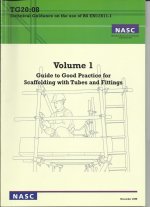Not on the street HSWT. Our jobs are obviously tied using doubles on both standards on a braced frame, single sway braced and plans every 4th lift between tie positions as a minimum. Depending on how I see it, it is not uncommon for us to put in an Aberdeen on a braced frame and only really now use Aberdeen's fully when the job is sheated. When I first started I did use them all the time no matter the circumstance but as I was pricing against other's who didn't the practice soon stopped. To be honest, it's also easier to comply with all the regulations without them, you have the maximum lift height of 2m which can be tight on some jobs with head room, we also used to just lap the boards in days gone by when all trannies were fitted using doubles but that's a no no now as well. We still use doubles on non boarded lifts and fit our mid transoms using swivels to get a temporary boarded lift but it's obviously much easier and quicker to fit using singles.
I agree using set is an answer but even they are not what they once were although officially the same load as ever. If I remember correctly, offshore they didn't want you using set instead of an Aberdeen if it could be avoided as Rigblast still required the ledger to be checked for the down force. In the end I think set was more used for the cantilevers and under slings and that was about it.
I think they call it progress.
